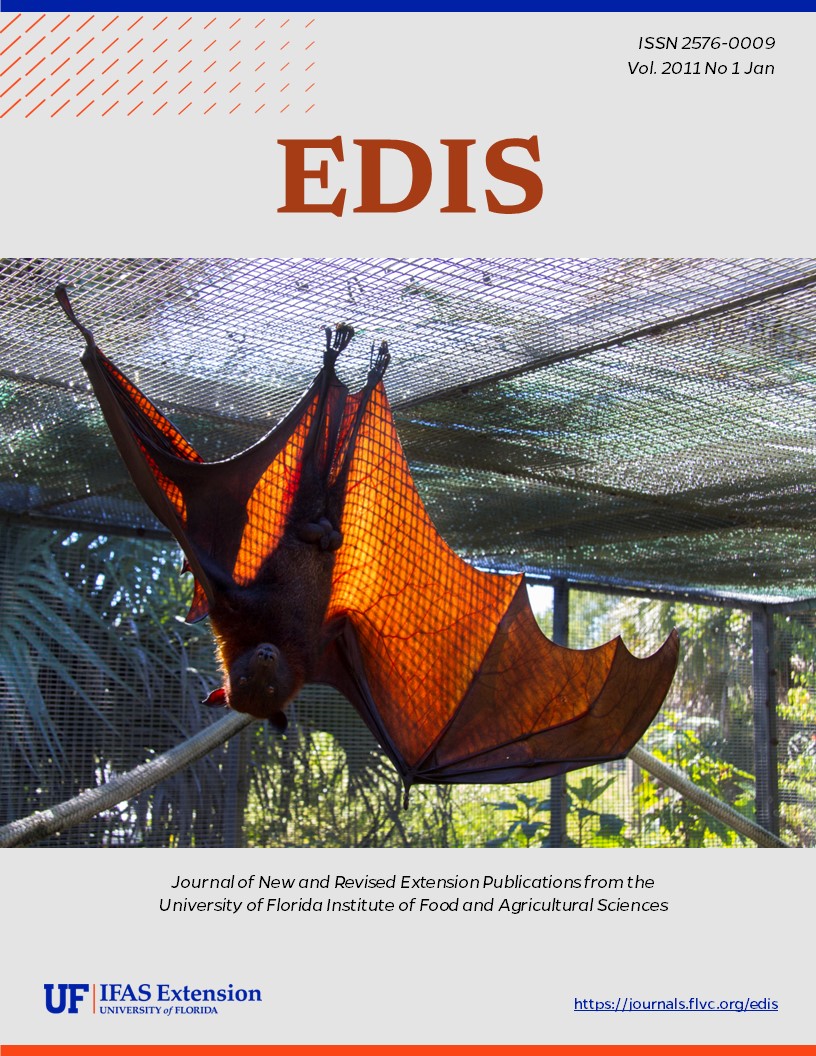Abstract
FOR274, a 5-page fact sheet by Kelly Peacock and Jason Smith, provides information on the diagnosis, biology, and management of the disease and should provide guidance for future efforts to identify and manage oak wilt in the state of Florida. Includes references. Published by the UF Department of School of Forest Resources and Conservation, November 2010. Reviewed November 2013.
References
Appel, D. N. 1995a. Chemical control of oak wilt. Pages 81-88 in: Oak Wilt Perspectives: The Proceedings of the National Oak Wilt Symposium. D. N. Appel and R. F. Billings, eds. Information Development Inc., Houston, TX.
Appel, D. N. 1995b. The oak wilt enigma: Perspectives from the Texas epidemic. Annual Review of Phytopathology 33:103-118. https://doi.org/10.1146/annurev.py.33.090195.000535
Beckman, C. H., J. E. Kuntz, A. J. Riker, and J. G. Berbee. 1953. Host responses associated with the development of oak wilt. Phytopathology 43(8):448-454.
Billings, R. 2008. The Texas Cooperative Oak Wilt Suppression Project: Lessons learned in the first twenty years. Pages 221-236 in The Proceedings of the 2nd National Oak Wilt Symposium. R. F. Billings and D. N. Appel, eds.
Bruhn, J. N., J. B. Pickens, and D. B. Stanfield. 1991. Probit analysis of oak wilt transmission through root grafts in red oak stands. Forest Science 37(1):28-44.
Camilli, K., D. Appel, and T. Watson. 2008. Studies on pruning cuts and wound dressings for oak control. Pages 121-134 in The Proceedings of the 2nd National Oak Wilt Symposium. R. F. Billings and D. N. Appel, eds. https://doi.org/10.48044/jauf.2007.014
Eggers, J., J. Juzwik, S. Bernick, and L. Mordaunt. 2005. Evaluation of propiconazole operational treatments of oaks for oak wilt control. USDA Forest Service North Central Research Station Research Note NC-390 6 pgs. https://doi.org/10.2737/NC-RN-390
Hayslett, M., J. Juzwik, B. Molten, D. Appel, and K. Camilli. 2008. Insect vectors of the oak wilt fungus in Missouri and Texas. Pages 109-120 in The Proceedings of the 2nd National Oak Wilt Symposium. R. F. Billings and D. N. Appel, eds.
Juzwik, J., S. Cook, L. Haugen, and J. Elwell. 2004. Oak wilt: People and trees, a community approach to management. USDA Forest Service General Technical Report. NC-240. https://doi.org/10.2737/NC-GTR-240
O'Brien, J., M. Mielke, D. Starkey, and J. Juzwik. 2000. How to identify, prevent, and control oak wilt. NA-PR-03-00. USDA Forest Service Northeastern Area State and private Forestry, St. Paul, MN.
Osterbauer, N. K., and D. W. French. 1992. Propiconazole as a treatment for oak wilt in Quercus rubra and Q. ellipsoidalis. Journal of Arboriculture 18(5):221-226.
Osterbauer, N. K., T. Salisbury., and D. W. French. 1994. Propiconazole as a treatment for oak wilt in Quercus alba and Q. macrocarpa. Journal of Arboriculture 20(3):202.
Sachs, I. B., V. M. G. Nair, and J. E. Kuntz. 1970. Penetration and degradation of cell walls in oaks infected with Ceratocystis fagacearum. Phytopathology 60:1399-1404. https://doi.org/10.1094/Phyto-60-1399
Struckmeyer, B. E., C. H. Beckman, J. E. Kuntz, and A. J. Riker. 1954. Plugging of vessels by tyloses and gums in wilting oaks. Phytopathology 44(3):148-153

